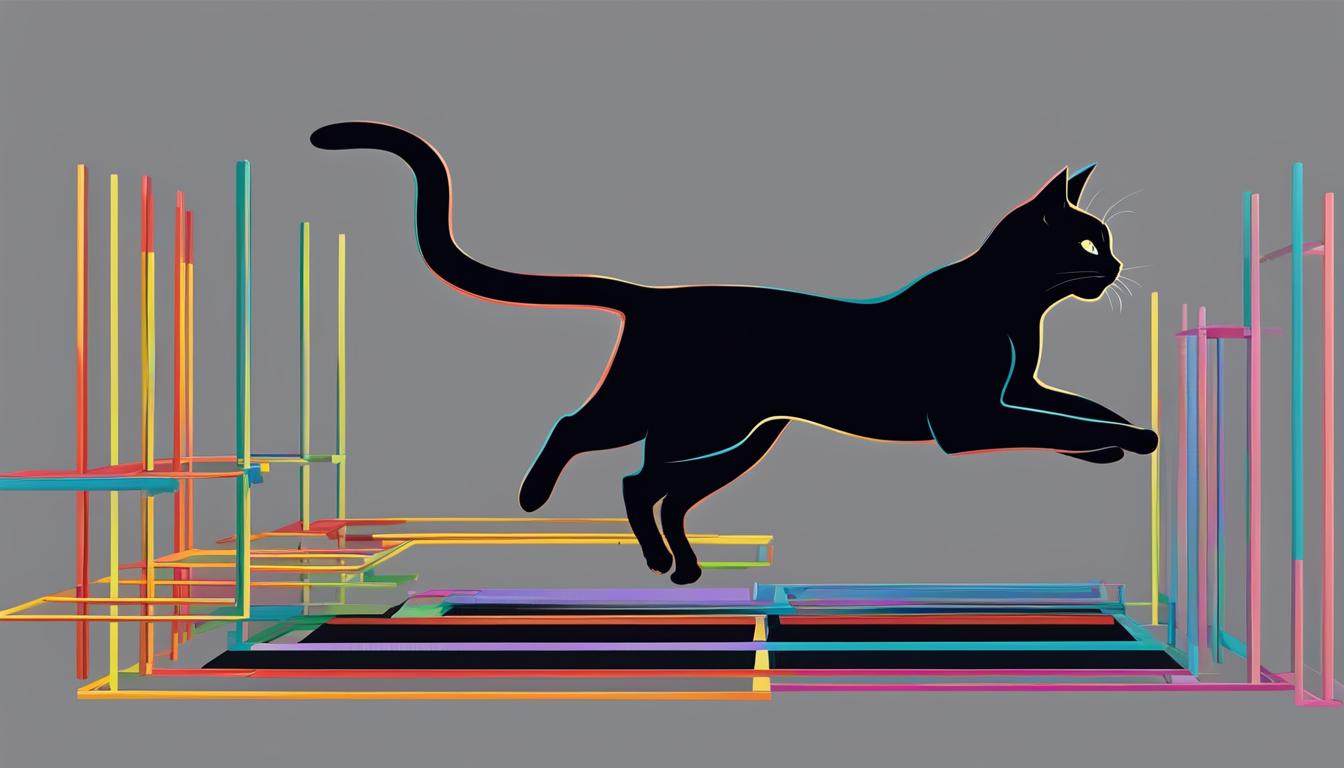Meow! Have you ever marveled at the acrobatic capabilities of our feline friends? Cats possess a remarkable ability to move with grace and agility, captivating us with their balance and nimbleness. But did you know that their agility extends beyond mere entertainment? The science behind cat agility holds potential breakthroughs in the field of medicine, particularly in the treatment of spinal cord damage in humans. Let’s delve into this fascinating topic and uncover the secrets behind their incredible abilities!
Key Takeaways:
- Cats’ agility and acrobatic capabilities may hold the key to helping people with spinal cord damage walk better and with more balance.
- Research has shown that cats’ ability to adjust their stride and rebalance their bodies using muscles all over their body is a significant breakthrough in medical research.
- Cats’ balance and agility make them a better model for human movement compared to mice.
- The activation of neurons in response to touch in cats holds potential for improving spinal neural function and helping people with spinal cord injuries regain mobility.
- Cats’ unique abilities may pave the way for advancements in understanding balance control and reconnecting the brain and spinal cord in humans.
The Evolution of Cat Agility: Adaptations for Predatory Behavior
The remarkable agility of cats is a testament to their incredible adaptations for predatory behavior. Over the course of evolution, cats have developed a range of physical attributes and characteristics that enable them to move with speed, precision, and grace. These adaptations have allowed them to become exceptional hunters and masters of agility.
One key adaptation is the presence of fast-twitch and slow-twitch muscle fibers in their bodies. Fast-twitch muscle fibers provide cats with quick bursts of power and speed, allowing them to pounce on prey swiftly. On the other hand, slow-twitch muscle fibers provide endurance, enabling cats to maintain their agility during prolonged pursuits. The combination of these muscle fibers gives cats an advantage in their ability to execute rapid movements with efficiency.
Additionally, cats possess a flexible spine and powerful leg muscles, which work in tandem to facilitate their acrobatic maneuvers. The flexibility of their spine allows for sharp turns, sudden stops, and high-speed movements, while their strong leg muscles provide the strength necessary for remarkable leaps and jumps. These physical attributes enable cats to navigate their environments effortlessly and go after their prey with unmatched agility.
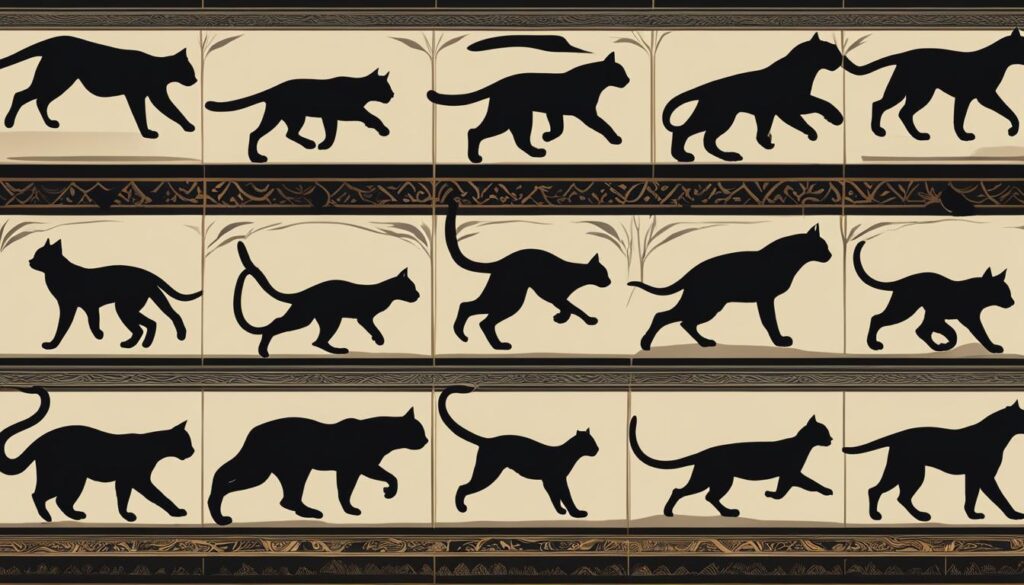
Cats’ reflexes and sense of balance are also critical factors in their agility. Their reflexes allow them to react quickly to external stimuli, making split-second adjustments to ensure they land on their feet after jumps or falls. This remarkable ability is made possible by their highly developed vestibular system, which controls their sense of balance.
In conclusion, the evolution of cat agility is a fascinating process that has resulted in a range of adaptations for predatory behavior. From their fast-twitch and slow-twitch muscle fibers to their flexible spines, powerful leg muscles, reflexes, and sense of balance, every aspect of a cat’s biology is finely tuned for unmatched agility. Understanding these adaptations can help us appreciate the awe-inspiring abilities of our feline friends and further research in the field of biomechanics and animal locomotion.
Factors Influencing Cat Agility: Physical Attributes, Environment, and Genetics
When it comes to cat agility, several factors come into play. Physical attributes play a significant role in determining a cat’s agility. Cats with flexible joints, strong muscles, and excellent balance are more likely to exhibit greater agility. Their flexibility allows them to make quick and precise movements, while their reflexes help them react swiftly to changes in their environment. Balance is essential for maintaining stability during agile maneuvers. These physical traits contribute to a cat’s overall agility and athleticism.
The environment also plays a role in the development of cat agility. Outdoor cats have more opportunities for climbing, jumping, and running, which helps foster their agility skills. Interacting with various objects and navigating through different terrains challenges their abilities and enhances their agility. On the other hand, indoor cats may have limited spaces and fewer chances for physical challenges. However, cat owners can create stimulating environments at home, such as providing climbing structures and interactive toys, to encourage their cat’s agility.
Genetics also influence a cat’s agility. Certain breeds are known for their exceptional athleticism and agility. For example, the Bengal cat is recognized for its agility and ability to perform impressive acrobatic feats. These breeds may possess genetic traits that contribute to their superior agility compared to other breeds. Understanding the genetic makeup of a cat can provide insights into their potential for agility and help cat owners select breeds that align with their desired level of agility.
Factors Influencing Cat Agility: Summary
- Physical attributes such as flexibility, reflexes, and balance contribute to a cat’s agility.
- The environment, including access to outdoor spaces and physical challenges, impacts a cat’s agility development.
- Genetics play a role, with certain breeds being naturally more athletic and agile.
By considering these factors and providing appropriate physical stimulation and care, cat owners can support their feline companions in developing and maintaining their agility. Whether it’s through creating an enriching environment, engaging in interactive play, or choosing breeds known for agility, nurturing a cat’s physical abilities can lead to a happier, healthier, and more agile pet.
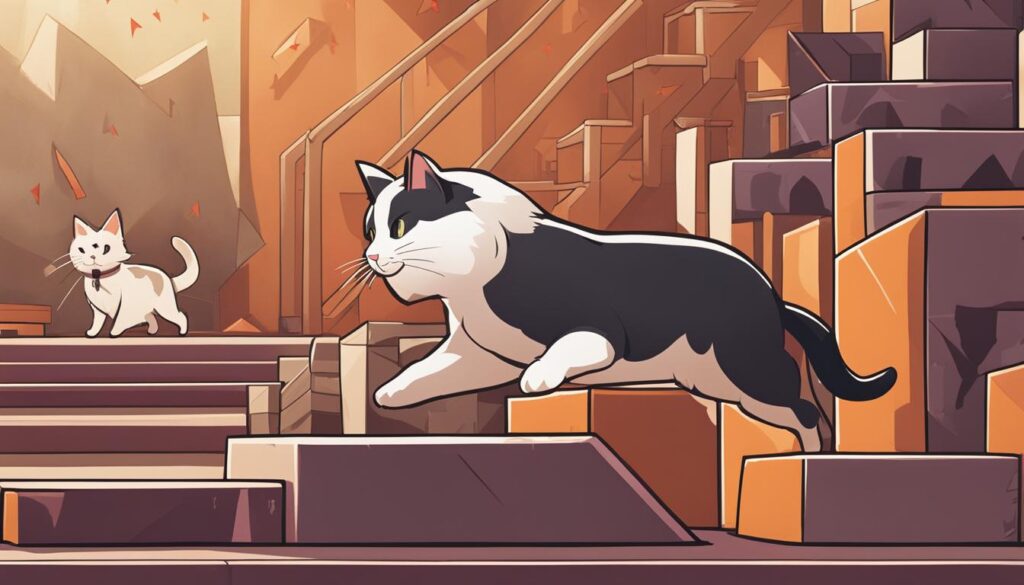
The Science Behind Cat Agility: Anatomy, Physiology, and Unique Features
When it comes to cat agility, the secret lies in their remarkable anatomy, physiology, and unique features. Cats possess a combination of muscles, joints, and reflexes that allow them to perform incredible acrobatic feats. Let’s take a closer look at the key elements that contribute to their agility:
Muscles and Joints
Cats have highly developed muscles throughout their bodies, which provide them with the strength and power needed for agile movements. These muscles, combined with their flexible joints, enable cats to execute quick and precise actions, such as leaping, climbing, and twisting in mid-air. Additionally, cats have cartilage in their joints that acts as a shock absorber and reduces friction, allowing for smooth and fluid motion.
Balance and Reflexes
Cats have an incredible sense of balance, thanks to their sensory organs located in their inner ears. These organs provide cats with the ability to maintain equilibrium even during challenging maneuvers. Their reflexes also play a crucial role in their agility, allowing them to make split-second adjustments and land on their feet after falls or jumps.
Retractable Claws
The retractable claws of cats are another unique feature that enhances their agility. Cats can extend and retract their claws as needed, providing them with improved grip and stability during climbs and jumps. This adaptive feature allows them to navigate various surfaces effortlessly and maintain control over their movements.
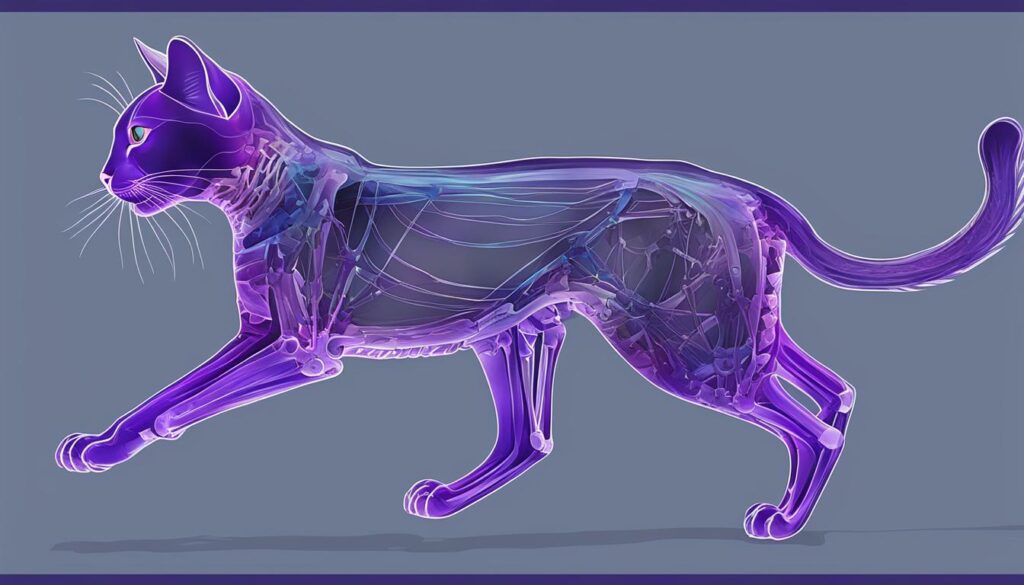
As we can see, the science behind cat agility is a fascinating blend of anatomy, physiology, and unique adaptations. From their muscular strength and flexible joints to their exceptional balance, reflexes, and retractable claws, every aspect of a cat’s physical composition contributes to their extraordinary agility.
Assessing and Supporting Cat Agility: Signs, Testing, and Considerations
When it comes to assessing a cat’s agility, there are several signs to look out for. An agile cat will display high activity levels, constantly exploring and engaging with its environment. You may notice your cat leaping onto high surfaces effortlessly or balancing with ease on narrow ledges. These behaviors are indicative of a cat’s natural agility and athleticism.
To further evaluate your cat’s agility, you can create obstacle courses or agility tests at home. These courses can include climbing structures, tunnels, and obstacles for your cat to navigate through. By observing how your cat approaches and overcomes these challenges, you can gain a better understanding of their agility levels.
It’s important to consider that a cat’s age and health can impact their agility. Older cats may experience decreased flexibility and mobility, which can affect their ability to perform certain agile movements. Additionally, joint issues such as arthritis can also hinder a cat’s agility. To support and maintain their agility, joint support supplements, regular exercise, and rehabilitation therapies can be beneficial, especially for older cats or those with existing joint issues.
Table: Agility Tests and Observations
| Agility Test | Observation |
|---|---|
| Jumping | Observe how high and effortlessly the cat can jump onto elevated surfaces. |
| Balancing | Observe the cat’s ability to balance on narrow ledges or uneven surfaces. |
| Climbing | Observe the cat’s agility while climbing structures or trees. |
| Tunnel Navigation | Observe the cat’s comfort and ease while crawling through tunnels. |
| Speed and Agility | Observe how quickly the cat can change direction and navigate obstacles. |
By understanding the signs of an agile cat, conducting agility tests, and providing appropriate support and care, you can help your feline companion maintain their agility and overall well-being.
Cat Anatomy: Exploring Joints, Cartilage, and Unique Features
When it comes to understanding the agility of cats, their anatomy plays a vital role. Let’s take a closer look at the fascinating features that contribute to their dexterity, including joints, cartilage, and retractable claws.
Cats possess a total of 244 bones, each connected by joints that allow for smooth movement and flexibility. These joints are surrounded by cartilage, which acts as a shock absorber, reducing friction and ensuring smooth articulation. Unlike humans, cats have rounded joints that facilitate a wide range of motion and fluidity in their movements.
One of the most intriguing aspects of a cat’s anatomy is their retractable claws. These specialized claws provide cats with enhanced gripping capabilities, enabling them to maintain stability during acrobatic maneuvers. By retracting their claws, cats ensure that their claws remain sharp for hunting and self-defense purposes.
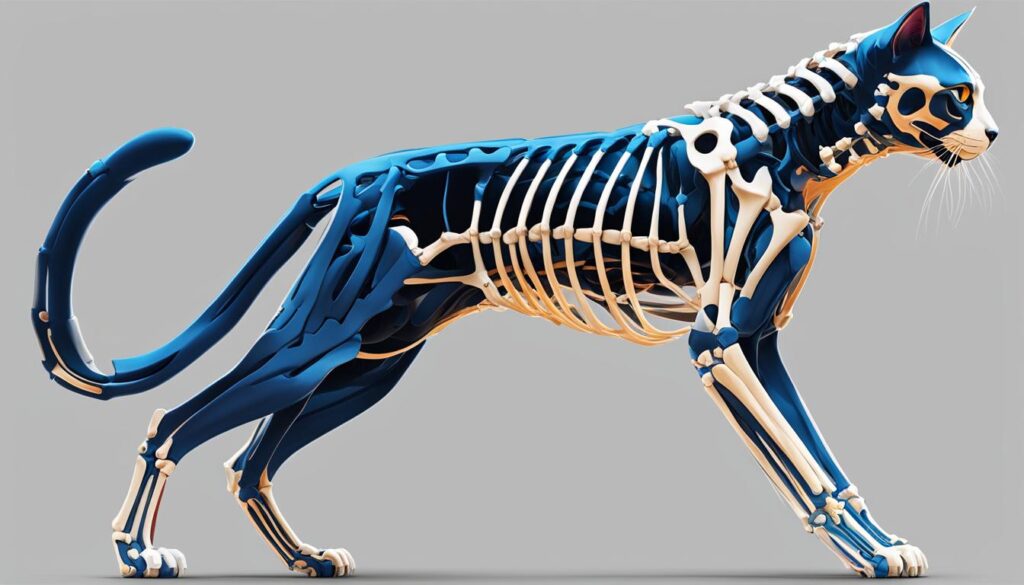
Comparing Cat and Human Joint Anatomy
| Feature | Cat | Human |
|---|---|---|
| Number of Bones | 244 | 206 |
| Joints | Rounded and flexible | Hinge and ball-and-socket |
| Claws | Retractable | Non-retractable |
It’s important to pay attention to signs of joint issues in cats, such as arthritis and injuries. Limping, decreased activity levels, and difficulty in jumping or climbing may indicate underlying joint problems. Regular veterinary care and monitoring can help detect and address these issues, ensuring a cat’s agility and overall well-being.
The Remarkable Agility of Cats: A Blend of Biology and Behavior
When it comes to agility, cats are truly remarkable creatures. Their ability to perform acrobatic feats and navigate even the narrowest of spaces is a result of a perfect blend of biology and behavior. Let’s take a closer look at what makes cats so agile and how various factors contribute to their incredible athleticism.
First and foremost, cats owe their agility to evolutionary adaptations that have been honed over thousands of years. Their flexible spines, powerful leg muscles, and lightning-fast reflexes are all traits that have been developed through the process of natural selection. These adaptations were crucial for their ancestors’ success as predators and continue to serve them well today.
But it’s not just biology that determines a cat’s agility. Environmental influences also play a significant role. Outdoor cats, with their access to a wide range of physical challenges, have more opportunities to develop and refine their agility skills. From climbing trees to chasing prey, these experiences contribute to their overall agility. On the other hand, indoor cats may have limited space for physical exploration, but that doesn’t mean they can’t be agile. Providing them with climbing structures and interactive toys can help foster their agility and keep them mentally stimulated.
While cats may seem like masters of agility, it’s important to remember that they are not invincible. Joint cracking, although less audible in cats compared to humans, can still occur. Factors such as age and joint issues, including arthritis and injuries, can impact a cat’s agility and overall mobility. Regular veterinary care and attention to joint health are essential to ensure that our feline friends can continue to showcase their remarkable agility for years to come.
FAQ
Can cats’ agility really help people with spinal cord damage?
Yes, research has shown that cats’ ability to adjust and rebalance their bodies after stumbling has potential applications in the treatment of partial spinal cord injuries in humans.
How do cats’ muscles contribute to their agility?
Cats have developed fast-twitch and slow-twitch muscle fibers that allow them to move quickly and with precision, enabling sharp turns, sudden stops, and high-speed movements.
What factors influence a cat’s agility?
Physical attributes such as flexibility, reflexes, balance, and muscularity, as well as the environment and genetics, all play a significant role in a cat’s agility.
How can I assess my cat’s agility?
Signs of an agile cat include high activity levels, curiosity, leaping onto high surfaces, and balance on narrow ledges. You can also create obstacle courses or agility courses at home to test your cat’s agility.
Can joint issues affect a cat’s agility?
Yes, joint issues such as arthritis and injuries can impact a cat’s agility. Regular monitoring and veterinary care are important to detect and address joint issues in cats.
Is joint cracking normal in cats?
Joint cracking in cats is possible, although it is generally less audible than in humans due to smaller joint size.
What is the science behind cat agility?
Cats’ anatomy and physiology, including their highly developed muscles, flexible spines, excellent sense of balance, and unique features such as retractable claws, all contribute to their agility.

